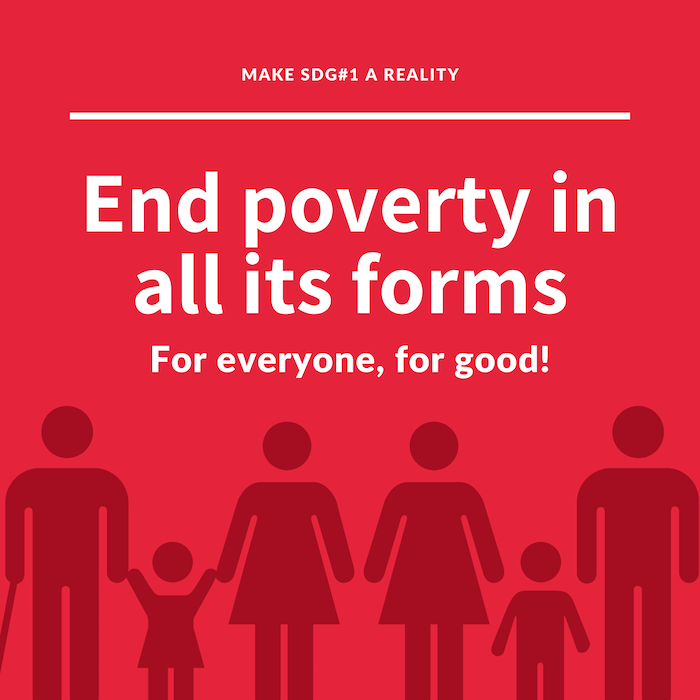For Immediate Release – Campaign 2000 is a national non-partisan coalition monitoring federal progress (or lack thereof) on child and family poverty. Their latest annual report finds that in 2021, despite historic progress achieved in 2020, Canada saw a sharp upswing in national child poverty rates. As pandemic benefits wound down and the cost of living rose, poverty rates rebounded, resulting in over 1 million children living in poverty.
“Twenty-four years have passed since the year 2000, when the federal government’s commitment to eradicate poverty was meant to be fulfilled,” said Chris Brillinger, Executive Director of Family Service Toronto, the backbone agency of Campaign 2000. “The pandemic revealed that, with increased transfers to families and bold investments proven to reduce poverty rates, we can eradicate poverty. Only six years remain to meet the commitments to the United Nations Sustainable Development Goals, the first of which is No Poverty. We need bolder targets and an actionable plan for ending poverty by 2030.”
The new national report, Unprecedented Progress on Poverty Reduction Being Undone, finds that rates of child poverty increased in every province and territory from 2020 to 2021. The national report will be released in coordination with provincial report cards from partners in British Columbia, Alberta, Manitoba, Ontario, New Brunswick, Prince Edward Island, Newfoundland and Labrador, Nunavut and Nova Scotia.
“Provincial and territorial governments have a crucial role to play in fulfilling Canada’s commitments to ending poverty,” said Christine Saulnier, Director of the Canadian Centre for Policy Alternatives-Nova Scotia and co-author of the Nova Scotia report card. “Working together with the federal government, we can urgently implement public policy solutions proven to reduce poverty. We have the fiscal capacity; now we need political will.”
Disproportionately higher rates were seen for people marginalized by colonization, racism and systemic discrimination, including First Nations, Inuit and Métis children and racialized and migrant children. This report emphasizes the need for a trauma-informed rights-based approach to policy development.
Campaign 2000
“Canadian governments have an obligation to uphold all people’s right to an adequate standard of living. Poverty is a violation of this right,” says Natalie Appleyard, Campaign 2000 Steering Committee member and Policy Analyst at Citizens for Public Justice. “If we truly want to be a society where all people are treated as equals, where every child has the opportunity to grow up nurtured and with their needs met, we need to rethink our spending priorities and our attitudes towards poverty in Canada.”
The 2023 update offers a sustainable, achievable, ongoing anti-poverty plan that includes more than 30 recommendations addressing inequality, income security, housing, childcare, decent work and healthcare.
“Children have one chance at childhood, the most sensitive stage of human development. They pay the highest price when our policies and programs fail to protect them from poverty,” said Sevaun Palvetzian, President and CEO of UNICEF Canada. “As a G7 country with one of the world’s largest economies, Canada can do more to fulfill every child’s right to an adequate standard of living – something every child deserves.”
Provincial and Territorial Contacts:
Yukon: Kristina Craig, Executive Director, Yukon Anti-Poverty Coalition, 867-334- 9318, ed@yapc.ca
North West Territories: Janine Harvey, Executive Director for Tahiuqtiit Women’s Society, Member of Right to Housing Canada, janineharvey11@gmail.com
Nunavut: Amautiit: Nunavut Inuit Women’s Association, admin@amautiit.ca
British Columbia: Adrienne Montani, Executive Director, First Call Child and Youth Advocacy Society, 778-320-4561,adrienne@firstcallbc.org
Alberta: Bradley Lafortune, Executive Director, Public Interest Alberta, Mobile: 780-901-1177, Brad.Lafortune@PIAlberta.org and Sydney Sheloff, Edmonton Social Planning Council, 780-423-2301 ext. 354, sydneys@edmontonsocialplanning.ca
Saskatchewan: Miguel Sanchez PhD, University of Regina, 306-550-7322 miguel@uregina.ca
Manitoba: Kate Kehler, Executive Director, Social Planning Council of Winnipeg, 204-943-2561, cell 204-590-8932, kkehler@spcw.mb.ca
Ontario: Mithilen Mathipalan, Family Service Toronto, Coordinator, Social Action, Ontario Coordinator, Campaign 2000, 416-595-9230 x298, cell 416-666-8491, mithilenma@familyservicetoronto.org
New Brunswick: Randy Hatfield and Heather Atcheson, Human Development Council, 506-634-1673, randy@sjhdc.ca;heather@sjhdc.ca
Nova Scotia: Lauren Matheson, Canadian Centre for Policy Alternatives-Nova Scotia, Cell 902- 579-9555,lmatheson@policyalternatives.ca
Prince Edward Island: Mary Boyd, 902-969-2693, MaryBoyd@live.ca
Newfoundland and Labrador: Katie Keats, Manager of Fund Development and Communications, Choices for Youth, P: 709-754-0446 ext. 213, Cell 709-597-2401
BACKGROUNDER
Key Findings from the 2023 National Update, Unprecedented Progress on Poverty Reduction Being Undone
- Over 1 million children lived in poverty (1,162,460 or 15.6%) in 2021.
- The national child poverty rate increased by 2.1 percentage points between 2020-2021, following a historic reduction of 4.2 percentage points between 2019-2020. This increase represents an additional 163,550 childrenliving in poverty.
- The child poverty rate is higher (16.1%) for children under six than all children.
- Rates of child poverty increased in every province and territory, with highest increases in Saskatchewan amongst the provinces (child poverty rate of 24.2%) and Nunavut amongst the territories (child poverty rate of 35.8%).
- The gap between wealthy and low-income families widened, as families in the bottom decile of income distribution had only 1.6% of the total share of income compared to families in the top decile, which had 25.4%.
- Government transfers, such as the Canada Child Benefit (CCB), are powerful poverty reduction tools. The CCB reduced child poverty by 9.2 percentage points in 2021.
- Child and family poverty disproportionately affects marginalized communities due to the historic and current violence of colonialism, racism and systemic discrimination.
- Canada’s universal childcare plan must include low-income children with a sliding scale fee model of $0 to $10 maximum. All childcare expansion must be within the public and non-profit sectors.
Campaign 2000 is a non-partisan, pan-Canadian network of 120 national, provincial and community partner organizations committed to working to end child and family poverty, hosted by Family Service Toronto. To download 2023 report cards or for more information, please visit http://www.campaign2000.ca.






